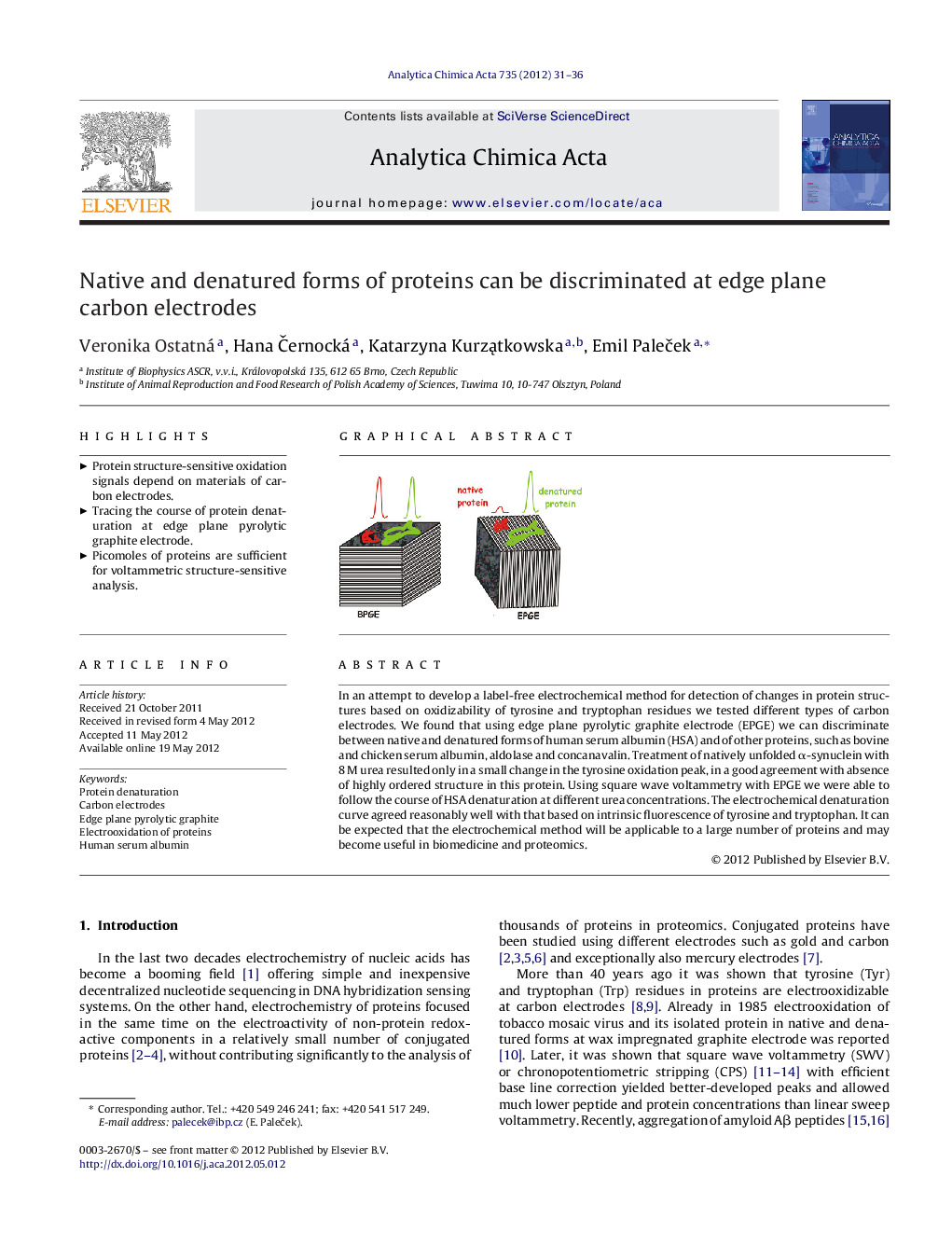| Article ID | Journal | Published Year | Pages | File Type |
|---|---|---|---|---|
| 1165994 | Analytica Chimica Acta | 2012 | 6 Pages |
In an attempt to develop a label-free electrochemical method for detection of changes in protein structures based on oxidizability of tyrosine and tryptophan residues we tested different types of carbon electrodes. We found that using edge plane pyrolytic graphite electrode (EPGE) we can discriminate between native and denatured forms of human serum albumin (HSA) and of other proteins, such as bovine and chicken serum albumin, aldolase and concanavalin. Treatment of natively unfolded α-synuclein with 8 M urea resulted only in a small change in the tyrosine oxidation peak, in a good agreement with absence of highly ordered structure in this protein. Using square wave voltammetry with EPGE we were able to follow the course of HSA denaturation at different urea concentrations. The electrochemical denaturation curve agreed reasonably well with that based on intrinsic fluorescence of tyrosine and tryptophan. It can be expected that the electrochemical method will be applicable to a large number of proteins and may become useful in biomedicine and proteomics.
Graphical abstractFigure optionsDownload full-size imageDownload as PowerPoint slideHighlights► Protein structure-sensitive oxidation signals depend on materials of carbon electrodes. ► Tracing the course of protein denaturation at edge plane pyrolytic graphite electrode. ► Picomoles of proteins are sufficient for voltammetric structure-sensitive analysis.
